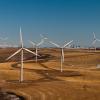Climate & Environment
 A new CU Boulder-led study found historic redlining laid a foundation for today’s bad air trends. In Denver, people of color, specifically those of Hispanic/Latino and American Indian/Alaska Native heritage, are exposed to higher levels of air pollution than non-Hispanic whites.
A new CU Boulder-led study found historic redlining laid a foundation for today’s bad air trends. In Denver, people of color, specifically those of Hispanic/Latino and American Indian/Alaska Native heritage, are exposed to higher levels of air pollution than non-Hispanic whites. Cassandra Brooks, whom The Explorers Club has honored as an “extraordinary person” doing “remarkable work to promote science and exploration,” gives onsite lessons on the vital ecosystem.
Cassandra Brooks, whom The Explorers Club has honored as an “extraordinary person” doing “remarkable work to promote science and exploration,” gives onsite lessons on the vital ecosystem. CU Boulder will contribute translational research, startup creation and strategic leadership as a key research university partner in a new $160 million National Science Foundation initiative to promote climate resilience.
CU Boulder will contribute translational research, startup creation and strategic leadership as a key research university partner in a new $160 million National Science Foundation initiative to promote climate resilience.
 With climate change, habitat loss, pesticides and non-native insects hurting the state’s pollinators, a CU Boulder entomologist is calling for action.
With climate change, habitat loss, pesticides and non-native insects hurting the state’s pollinators, a CU Boulder entomologist is calling for action. Dan Doak, CU Boulder professor of environmental studies who has studied threatened and endangered species for decades, reflects on a half century of species protection.
Dan Doak, CU Boulder professor of environmental studies who has studied threatened and endangered species for decades, reflects on a half century of species protection. A new CU Boulder analysis found that, with U.S. voters, climate concerns likely gave Democrats the White House in 2020.
A new CU Boulder analysis found that, with U.S. voters, climate concerns likely gave Democrats the White House in 2020. CU Boulder researchers discussed the challenges that could compromise the potential of some of the country’s most ambitious climate policies including the Inflation Reduction Act.
CU Boulder researchers discussed the challenges that could compromise the potential of some of the country’s most ambitious climate policies including the Inflation Reduction Act. Without drastically reducing global emissions, the Antarctic Ocean could become too acidic for hundreds of species living there, many already endangered by rising temperatures and sea ice loss.
Without drastically reducing global emissions, the Antarctic Ocean could become too acidic for hundreds of species living there, many already endangered by rising temperatures and sea ice loss. Just back from the United Nations climate summit in Dubai, Environmental Studies Professor Max Boykoff reflects on the historic pledge countries made to cut planet-warming fossil fuels—and where the agreement falls short.
Just back from the United Nations climate summit in Dubai, Environmental Studies Professor Max Boykoff reflects on the historic pledge countries made to cut planet-warming fossil fuels—and where the agreement falls short. A CU Boulder study led by undergraduate Grace Kroeger found in states with and without aggressive goals, utilities plan to drop fossil fuels.
A CU Boulder study led by undergraduate Grace Kroeger found in states with and without aggressive goals, utilities plan to drop fossil fuels.


